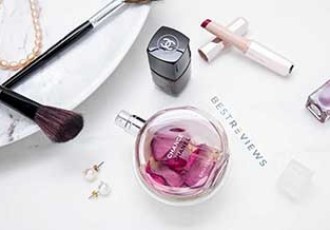BestReviews is reader-supported and may earn an affiliate commission. Details
We recommend these products based on an intensive research process that's designed to cut through the noise and find the top products in this space. Guided by experts, we spend hours looking into the factors that matter, to bring you these selections.

Updated November 2022
Approaching a messy mop of hair is an anxiety-inducing experience. While a regular brush can do the job, it’ll be a painful few minutes as you brush through knots, and you’ll likely end up with plenty of pulled-out strands.
However, with a detangling brush, you can gently tease out matted, knot-filled hair. Whether you’re battling a thick, messy curly mane or you want to brush out your child’s knotted strands without inflicting pain, a detangling brush separates hair without tugging at your scalp and ripping out strands.
Not all detangling brushes are the same, though. From choosing the right bristles to picking the perfect ergonomic handle for long brushing sessions, there’s a lot to consider. Some even come in small sizes to fit a child’s hand.

Wondering why you’re always dealing with messy, hard-to-comb hair? Here are a few reasons you may be prone to knotting.
Before grabbing your brand-new detangling brush, it’s essential to use the right technique to work through your matted locks. Comb through your ends before tackling the top of your head. While it’s tempting to rip through stubborn knots, work through them gently to prevent pulling out your hair.
There are three main types of detangling brushes on the market:
A detangler is a must-have tool for handling knotty, matted hair, but it’s not a miracle worker. You may need detangling spray and patience to help tease out stubborn knots. You’ll still need to carefully work through hair to remove tangles. Just because you’re using a detangling brush doesn’t mean you can quickly and roughly brush out your hair without consequence.
Pick a brush that’s comfortable to hold. This is especially important if you have long, thick hair that may take a while to detangle. Some come with a curved handle for maximum comfort, while others have a rubberized grip to prevent the brush from slipping out of your hand every time you hit a stubborn knot.
For best results, choose wide-toothed combs or brushes with bristles spaced far apart. Opt for brushes with round tips, as they are gentler on the scalp and hair. Rounded tips are also less likely to pull out and damage hair.
The majority of detangling brushes cost under $20, with the exception of a handful of luxury name-brand brushes that cost more than $100.
If you’re seriously prone to tangles, here are some tips to help you cope:

A. A wide-toothed comb or soft-bristled handheld brush is your best option. Avoid paddle brushes if you have fine, very dry hair; the bristles and design are likely to tug on your hair more than they actually remove knots. Natural boar’s hair bristles are a great option for thin hair. Regardless of the brush you select, always gently work through knots to prevent pulling out strands.
A. Hair mask treatments and quality leave-in conditioners will help add moisture to your thirsty locks. Avoid shampoos with harsh ingredients that can sap moisture from your hair (e.g., alcohols). If you color your hair, always wait at least a month before dyeing it again. Space out touch-ups if you find your hair is dryer than normal. You’ll have to live with your roots showing for longer than you would like, but you’ll avoid further damage to your hair.
A. Pull back hair in a soft snag-free elastic. But instead of leaving your ponytail loose, use another elastic to secure it in the middle. Other tangle-proof hairstyles for exercising include braids and top knots.
A. While straight-haired individuals may find it necessary to work through knots on a daily basis, it’s not essential to use a detangler every day if you have thick, curly hair.
Get emails you’ll love.
Learn about the products you’re wondering if you should buy and get advice on using your latest purchases.
